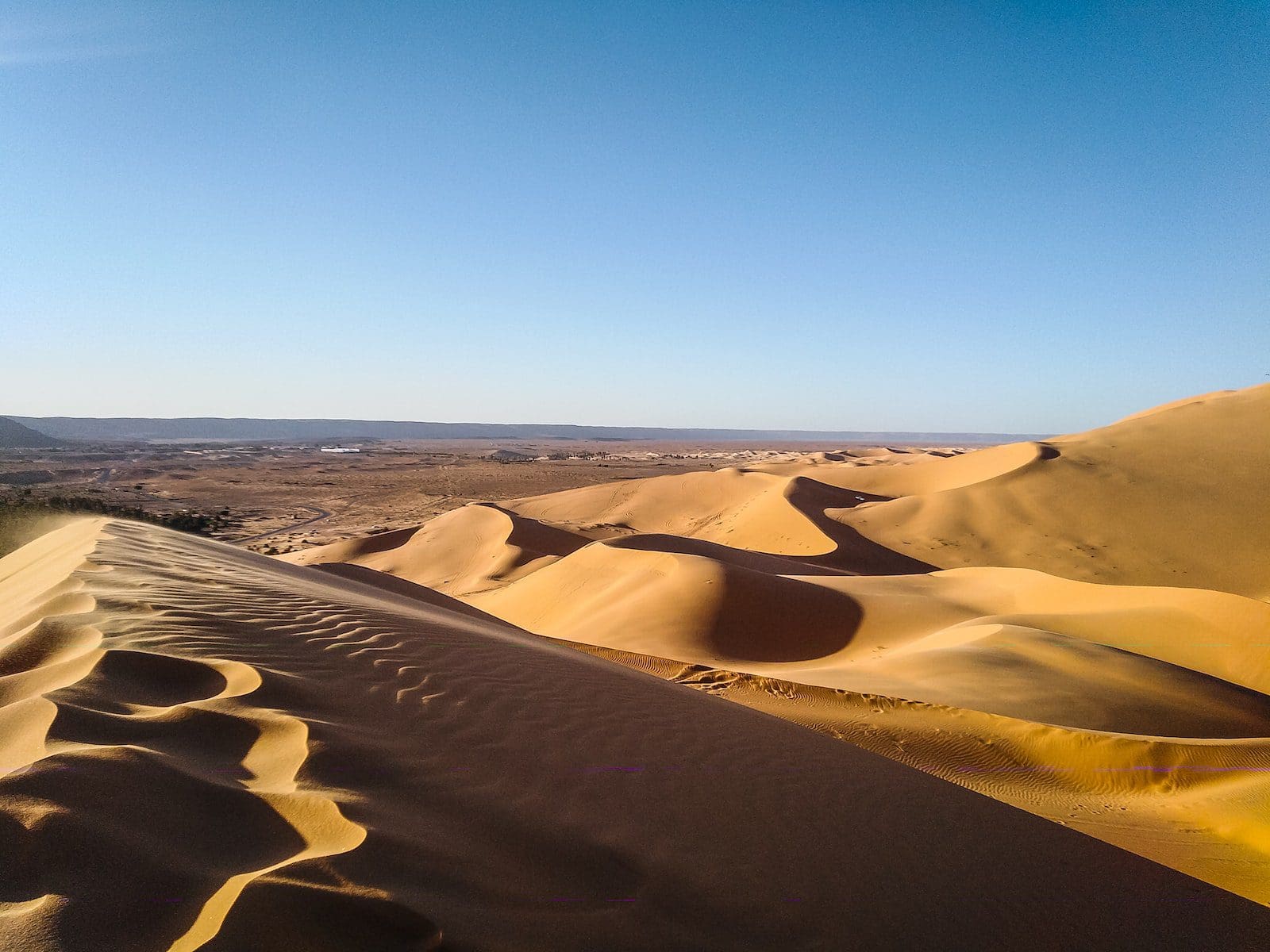Over one-fifth of the vegetation of the Earth is covered with the barren field, either be it in an extremely mild or certainly lower level of temperature. This barren field is commonly known as a desert.
On average, there are two types of desert in the Earth’s vegetation. The hot desert and the cold desert are the broad category. Both of these deserts have very harsh climatic conditions which they are categorized based on their temperature.
Key Takeaways
- Hot deserts experience high temperatures and low precipitation, leading to dry, sandy, and rocky landscapes.
- Cold deserts have low temperatures and low precipitation, with landscapes consisting of rocks, gravel, and ice.
- Both deserts support unique plant and animal adaptations, with species evolving to survive extreme conditions.
Hot Desert vs Cold Desert
Hot deserts are characterized by high-temperature rates during the day and relatively mild temperature rates at night. Cold deserts have colder temperatures overall, with less extreme temperature fluctuations and changes. Hot deserts have more plant and animal life than cold deserts.

The hot deserts have high temperatures, barren fields with low precipitation, with relatively minimum habitat of flora and fauna.
The range of the geographical representation of this desert varies from 15 to 30 degrees north and south of the equator, mainly found in tropical and subtropical regions.
The cold deserts are found in low-temperature acquiring regions. These types of geographical locations can be easily found in regions with higher altitudes, like hilly regions of Greenland, the Antarctic, etc.
The temperature range of this type of desert consists of mildly warm summers and extremely cool winters with extreme snowfalls. The span of the winter weather tends to be longer for the cold desert regions.
The common range includes -2 to 4 degree Celsius for the fall weather and 21-26 degree Celsius in the spring weather.
Comparison Table
| Parameters of Comparison | Hot Desert | Cold Desert |
|---|---|---|
| Temperature | This desert comprises of very high temperature. | This desert comprises of very cold temperature. |
| Geography | These are found in the tropical and sub-tropical districts. | These are found in low temperature regions at higher altitude level. |
| Resemblance | The desert looks like an orange field covered with sandy soil. | The desert looks like grey field covered with ice. |
| Rainfall | The rainfall level is low and evaporation level is high. | The rainfall level is high compared to evaporation level. |
| Fauna | Foxes, dung beetles, camels etc. | Polar bear, dear etc. |
What is Hot Desert?
The hot deserts have high temperatures, barren fields with low precipitation, with relatively minimum habitat of flora and fauna.
The range of the geographical representation of this desert varies from 15 -30 degrees north and south of the equator, mainly found in tropical and subtropical regions.
The annual rainfall in this kind of desert is relatively lower, i.e., below 250 mm, because of which the temperature tends to be extremely warm and dry.
Relatively higher numbers of hot deserts have lower water intake or water availability because of the harsh windy weather they possess. The most extreme temperature in a hot desert, by and large, remaining parts, is more than 40 degrees Celsius.
The temperature in a hot desert does not go below 40 degrees Celsius, and the maximum temperature which came into notice was 57.77 degrees Celsius.
The vegetation of hot deserts is, for the most part, ‘xerophytic’ or dry season safe. It incorporates prickly plants, bushes, acacia, and wiry grasses. The fauna includes Foxes, dung beetles, camels, etc. All of these animals are capable of surviving such extremely hot weather conditions.
Some famous hot deserts are the Sahara Desert, the Great Australian Desert, the Arabian Desert, etc.

What is Cold Desert?
The cold deserts are found in low-temperature acquiring regions. These types of geographical locations can be easily found in regions with higher altitudes, like hilly regions of Greenland, Antarctic, etc.
The temperature range of this type of desert consists of mildly warm summers and extremely cool winters with extreme snowfalls.
The span of the winter weather tends to be longer for the cold desert regions. The common range includes -2 to 4 degree Celsius for the fall weather and 21-26 degree Celsius in the spring weather.
The annual rainfall is relatively higher in the cold desert, due to which the landscape has extremely heavy snowfall.
Vegetation is dispersed with needle-like leaves to retain the maximum water capacity. The creatures found in chilly deserts incorporate foxes, rabbits, and so forth, the fauna consists of Deer, kit foxes, and coyotes, polar bears, etc.

Main Differences Between Hot Desert and Cold Desert
- The hot desert comprises very high temperatures. The cold desert comprises very cold temperatures.
- The hot desert is found in tropical and sub-tropical districts, whereas these are found in low-temperature regions at higher altitude levels.
- The hot desert looks like an orange field covered with sandy soil, whereas the cold desert looks like a grey field covered with ice.
- The vegetation of hot deserts is for the most part ‘xerophytic’ or dry season safe. It incorporates the prickly plants, bushes, acacia and wiry grasses. While, the vegetation in the cold desert is dispersed with needle like leaves to retain maximum water capacity.
- The rainfall level is low and evaporation level is high for the hot desert and the rainfall level is high compared to evaporation level for the cold desert.




